Salt: 3 Easy Ways to Minimize Sodium for Your Baby
- Why it's a good idea to minimize added sodium in your baby's diet...there are a few reasons but basically we want your baby to learn to taste the flavor of foods, not the salt
- How much is the maximum amount of added sodium per day babies should have, and whether or not you should be considering the sodium from breastmilk and/or formula
- 3 easy ways to minimize sodium, including some guidelines on what to look for on the label if you're considering the sodium content of packaged foods to feed your baby

LISTEN TO THIS EPISODE
Episode Description
How much salt can babies have? This is a tough one because we know minimizing sodium is ideal for baby-led weaning but what exactly does that mean?
In this episode, we’re looking at sodium when feeding babies. Why should babies avoid added salt? What foods do babies sometimes eat that have too much sodium? And I’m sharing 3 easy ways for you to minimize sodium for your baby.

Links from this Episode
- Baby-Led Weaning with Katie Ferraro program with the 100 First Foods™ Daily Meal Plan, join here: https://babyledweaning.co/program
- Baby-Led Weaning for Beginners free online workshop with 100 First Foods™ list to all attendees, register here: https://babyledweaning.co/baby-led-weaning-for-beginners
Other Episodes Related to This Topic
- Episode 75 - Canned Foods that CAN Work for Baby-Led Weaning
- Episode 253 - Sodium Limits for Babies Around the World

Latest Episodes
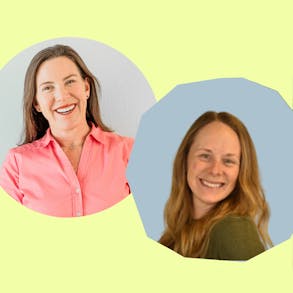
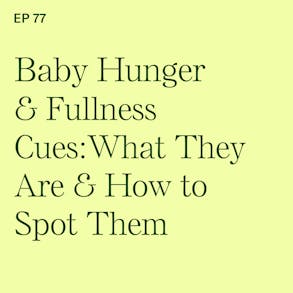
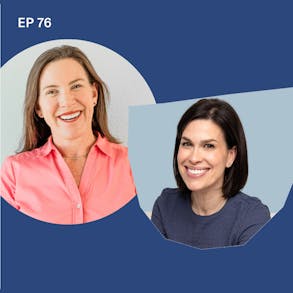
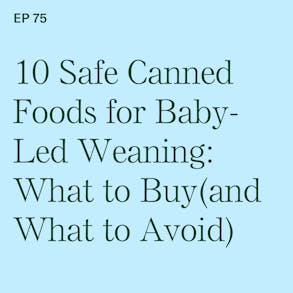

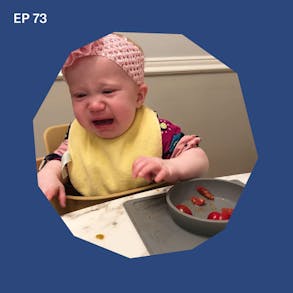
Katie Ferraro (0s):
Are you about to start solid foods but you don't know where to start? Or maybe you started with some purees and now you want to make a switch? The best place to get started learning about starting solid foods safely is my one hour online video workshop called Baby-Led Weaning for Beginners. I just rerecorded this free training and it's packed with videos and visuals on how to safely prep Baby-Led Weaning for Beginners. foods, what it looks like for the first few days, how to reduce choking risk, and what to do if your baby has an allergic reaction to food. Everybody on this free training gets a copy of my original 100 FIRST FOODS list, so you'll never run out of ideas about what to feed your baby. Next, you can get signed up for this video workshop at babyledweaning.co.
Katie Ferraro (42s):
If you have one hour to dedicate to learning about Baby-Led Weaning, come take this free online video training and grab your copy of that original a 100 First Foods list. While you're there, again, head to baby led weaning dot co to get signed up, And I hope to see you there. And so if you look at the nutrition facts panels of the foods that you're offering, keeping in mind that most of the foods with Baby-Led Weaning that you offer are wholesome, intact foods and not packaged foods, if on occasion you do do those packaged foods, as long as you stay below that sodium threshold per serving, since they're those, sometimes foods are totally fine and safe for your baby to have. Hey there, I'm Katie Ferraro, registered dietitian, college nutrition professor and mom of seven specializing inBaby-Led Weaning.
Katie Ferraro (1m 27s):
Here on the Baby-Led Weaning with Katie Ferraro podcast. I help you strip out all of the noise and nonsense about feeding, giving you the confidence and knowledge you need to give your baby a safe start to solid foods using Baby-Led Weaning. Well, hello and welcome back. Today we're talking about salt and sodium, and for whatever reason, this topic gets parents really spun up when their babies start solid foods, they hear the recommendation, oh, you should minimize or not include any added salt. And then they're like, well, what does that actually mean when I'm like in the kitchen preparing food for my baby? So today I'm gonna break down three Easy Ways to Minimize Sodium for Your Baby. I release two podcast episodes each week, a mini solo, Baby-Led Weaning training episode every Monday, and then a longer interview style episode where I interview another feeding expert every Thursday.
Katie Ferraro (2m 19s):
If you're not already subscribed, wherever you're listening to your podcast, please do that so that you get notified each week when the two episodes are live. Now, I like to start out each of these mini training episodes with a Baby-Led Weaning tip of the day. And today's tip is we're gonna touch briefly on canned foods and canned foods certainly in many cases can work for Baby-Led Weaning. You always wanna look for no added salt or low salt versions, but if you can't find them and for certain foods, it's just a little bit hard. If you do have a canned food, please know that by rinsing that food underneath the running faucet. So let's say you have black beans and you wanna make the black beans sweet potato tots, it's a recipe in my program, Baby-Led Weaning with Katie Ferraro, and you can't find low sodium black beans. You can just rinse them under the faucet that reduces the sodium by about 30%.
Katie Ferraro (3m 4s):
So look for no salt or no added salt or low salt versions of canned foods. And if you can't find them, rinse 'em and know that you're gonna cut the sodium back by about 30%. If you wanna check out all of the recipes from my 100 First Foods Daily Meal Plan and my 100 First Foods content library with all the instructions and videos that show you how to make all the foods on the 100 First Foods list, all of that in inside of my program, Baby-Led Weaning with Katie Ferraro, which you can find at babyledweaning.co/program. If you do not yet have a copy of my 100 First Foods list or you're just getting started with Baby-Led Weaning, the best place to start is my free online workshop that's called Baby-Led Weaning for Beginners. That's an online video workshop, and everybody on that free workshop gets a copy of my original 100 First Foods list, so you'll never run out of ideas of foods your baby can eat.
Katie Ferraro (3m 50s):
You can sign up for the workshop at babyledweaning.co/program. But hang tight because In this episode I'm gonna be sharing my super easy rule of thumb trick for how much sodium you do want to stay under when it comes to reading labels and if you are gonna be offering packaged foods to your baby. So why do you want to avoid salt? Now, salt is naturally occurring throughout the food supply. So we're not talking about zero milligrams of sodium. What we're talking about is avoiding added salt. So early exposure to sodium can start the lifelong preference for salty foods, and we want your baby to be able to taste the flavors of the foods, and we don't wanna mask them with added sodium. We also know that increasingly high salt intake levels can set the stage for health problems later in life.
Katie Ferraro (4m 34s):
High sodium intake is associated with links to higher rates of blood pressure and heart disease, and your baby's kidneys are not yet fully or adequately developed to handle really high mineral loads, and sodium is a mineral. Now, how much salt should babies quote unquote have? I wanna point out that the goal here is not zero milligrams of sodium, right? Sodium is a mineral, it's an electrolyte. It conducts nerve impulses in your baby's body, like literally keeps their heart beating like sodium does. Lots of important things. We just want to avoid excess sodium. Now in the United States and Canada, there's no official upper limit for sodium for babies under age one. So sometimes parents are like, wait a minute. I'm kind of like flying blind here, but I actually did a really fun deep dive into sodium limits around the world. If you're interested in learning what other countries do as far as recommending sodium, if you go back to episode 253, it's called Sodium Limits for Babies Around the World.
Katie Ferraro (5m 23s):
That was kind of a fun deep dive, my intern at the time, And I researched all of the major guidelines and like spoiler alert, literally nobody knows, quote unquote how much sodium a baby should have. So in Australia, there's a limit of a thousand milligrams per day for one to three year olds. In the uk, the guideline is less than 400 milligrams a day for six to 12 months old and less than 800 milligrams a day for one to three year olds. If you think about it, we're talking about salt and sodium. Sometimes parents use those words interchangeably, but they're technically not. So salt. If you think about like the table salt that's in your kitchen and the salt shaker, that's 40% sodium and 60% chloride. So a teaspoon of salt, which is approximately six grams, again, that's 40% sodium, so that'd be twenty three hundred and twenty five milligrams of sodium in one teaspoon of salt.
Katie Ferraro (6m 9s):
And so we're talking about that's almost six times as much as the UK guidelines say a six to 12 month old needs. So just rule of thumb is you definitely want to avoid even putting sprinkles of salt in your baby's food knowing that they're gonna be getting enough sodium from the breastmilk or the formula that you are offering them even when they start solid foods. So where does salt come from in the diet? Okay. The salt shaker, surprisingly, is not the primary source of salt, especially in the United States or the standard American diet, okay? It tends to be foods like canned foods and frozen foods, fast foods, convenience, foods that have a lot of sodium added to them. We already talked about ways in which you can minimize sodium if you are offering canned foods. And again, I don't want you to turn your nose up at canned foods because there are lots of great canned Foods that can work for Baby-Led Weaning. I did an entire episode, episode 75, called Canned Foods that can Work for Baby-Led Weaning.
Katie Ferraro (6m 56s):
And if you wanna check that out, head to blwpodcast.com/75 to learn more.
Momcozy (7m 4s):
Hey, we're gonna take a quick break, but I'll be right back. I am working on my IBCLC breastfeeding credential right now. It is a long haul. I'm in the thick of it. I'm in a course that's very long, and this section that we're in right now is all about the different types of breast pumps. And let me tell you, breast pump technology has come a long way since the days of modifying dairy cow milking machines, and then trying to use them to extract human milk. There is a new breast pump on the market from Momcozy, which is a brand trusted by over 3 million moms worldwide. Momcozy just launched their air one ultra slim breast pump. I'm so excited to tell you about it. So here's the deal on the air one, this is a pump designed for busy moms on the go. It's ultra slim, it's discreet. Finally, a pump that will not slow you down. It's super compact and lightweight so you don't have to mess around with any more bulky, uncomfortable pumps. And the air one fits seamlessly inside your bra for total convenience. It has a transparent top for easy nipple alignment, because let's be real adjusting. A pump should not be a guessing game. It has a wireless charging case. You just pop it in, charge it up, and you're ready to go. No tangled cords, no stress. It's also whisper quiet operating at under 45 decibels so you can pump confidently anywhere without worrying about noise. Plus, the soft silicone flange makes it so comfortable to use. Airone is available now at target.com or at your nearest target store. That's the Momcozy airone Ultra Slim Breast Pump, available now at target.com or at your nearest target store, and you can learn more at Momcozy dot com.
Katie Ferraro (8m 50s):
So let's dive in to three easy ways that you can minimize sodium intake for your baby. My first recommendation is to read your labels. Most of the foods that we're offering in Baby-Led Weaning are not gonna be processed foods, right? They're gonna be whole intact finger foods where you're not adding any sodium. So if on occasion you do rely on some packaged foods, that's perfectly fine, especially if it makes your life easier with regard to food preparation. So when you do buy foods with labels looking for no added salt is best, okay? There's some different terminology with regards to sodium on labeling. The word low sodium on a food package means that there's less than 140 milligrams per serving. I also wanna point out that sometimes you'll see things that are reduced sodium, and that's not really a good barometer for Baby-Led Weaning because all reduced sodium means is that there's 25% less sodium than the standard version of it.
Katie Ferraro (9m 37s):
So take soy sauce, for example. Okay? Liquid salt. If you do reduced sodium soy sauce, which a lot of people mistakenly call low salt soy sauce, it's not. It's reduced sodium. The one in the green bottle that's just 25% less sodium than the liquid salt, full test sodium soy sauce. And that's still way too much salt for babies. So here's my rule of thumb. When I'm looking at canned goods, I try to stick to 100 milligrams of sodium or less per serving. So that's a good realistic rule of thumb. Okay? So this is something that my baby can try. I also wanna take into consideration the fact that a hundred milligrams of sodium on the food label per serving or less, that's the adult serving size. And of course, your baby is not going to be eating that full adult serving size.
Katie Ferraro (10m 18s):
So if on occasion you're using packaged canned foods or frozen foods, that's perfectly fine. Just look for a hundred milligrams of sodium or less. And again, don't forget, if you're using those canned goods, that rinsing them under the faucet can reduce the sodium level by about one third. My second tip is if you're making foods for your baby that you also intend to eat, just pull your baby's portion first and add salt to yours later. Okay? Babies do not need to eat bland food, okay? Your baby's already been exposed to a lot of different flavor compounds. When you are pregnant, the flavor compounds of your diet travel through the amniotic fluid. When you're breastfeeding the flavor compounds of the foods you're eating, travel through the breastmilk so your babies taste at different flavors, okay? And please feel free to season liberally or use whatever, no salt seasoning you'd like to, but just avoid the added salt.
Katie Ferraro (11m 2s):
And if you wanna add salt to your own foods, just do that after you portion the baby's food out. My third suggestion for minimizing sodium for your baby is to really load up on other no salt seasonings. So herbs and spices don't contain salt, okay? In their purest form. And it really is desirable for your baby to be exposed to a wide variety of foods and flavors and tastes and textures. Okay? Flavoring comes in lots of salt-free selections inside of my program, Baby-Led Weaning with Katie Ferraro. We have a seasoning guide for all of the 100 First Foods. On the 100 First Foods list with ideas on how you can incorporate different seasonings and different spices and different flavors for your baby as you're working them through these new different textures and these different finger foods.
Katie Ferraro (11m 46s):
And all of these seasoning ideas. Do not use salt. And so again, if you wanna check that out, it's inside of the program, Baby-Led Weaning with Katie Ferraro. That's at babyledweaning.co/program. So in summary, read your labels. Stick to a hundred milligrams of sodium or less salt, your own portion of food after you pull the baby's no salt version. And third suggestion, load up on all of the no salt seasonings and spices. You probably have a cabinet full of seasoning and spices that you're not using right now. Go liberal on those with regards to seasoning your baby's fruits and their vegetables, the different starchy foods and the proteins. I have lots of suggestions on how you can do that inside of the program at babyledweaning.co/program. If you wanna check out the links from today's episode, there'll be in the show notes at blwpodcast.com/33. A special thank you to our partners at AirWave Media.
Katie Ferraro (12m 27s):
If you like podcasts that feature food and science, and using your brain, check out some of the podcasts from AirWave. We're online at blwpodcast.com. Thanks so much for listening, and I'll see you next time.
Dressed: The History of Fashion (12m 55s):
Hello, I'm Cassidy. And I'm April. And together we are fashion historians, friends and co-hosts of Dressed the History of Fashion, a podcast about why the clothes we wear matter throughout history and around the world, from The cultural and societal to the personal and often political. With each episode, we explore the multitude of meanings, quite literally sewn into the clothes we wear. Please join us in unraveling the Hidden Histories reside thing in your closet over the course of our newly launched eighth season. New new episodes are available on Wednesdays and Fridays on Apple Podcasts, Spotify, or wherever else you to your favorite shows.
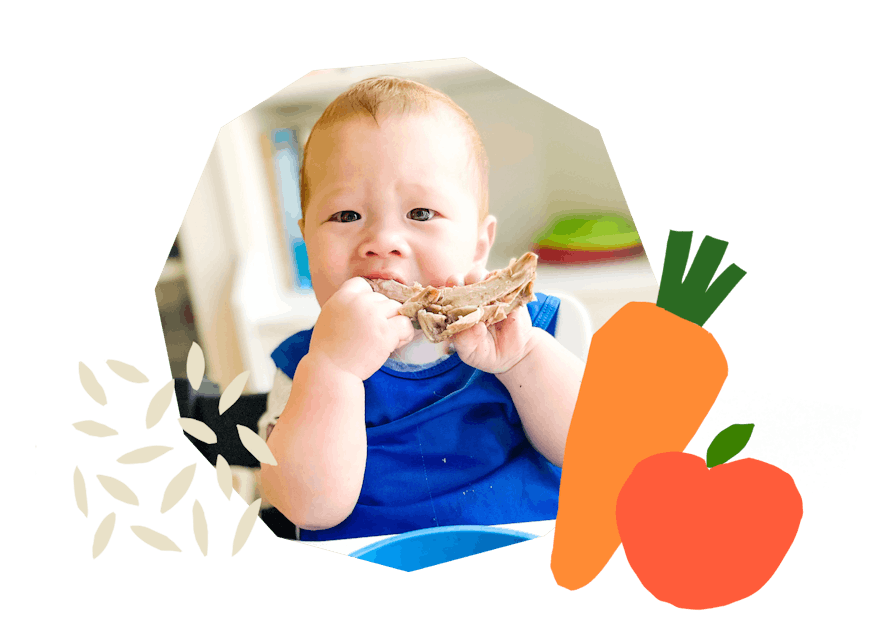
The Program Baby-Led Weaning with Katie Ferraro
A step-by-step digital program for starting solid foods safely and navigating the original 100 FIRST FOODS™ meal plan with baby-led weaning.
 EXPERT-LED, PROVEN APPROACH TO EATING REAL FOOD
EXPERT-LED, PROVEN APPROACH TO EATING REAL FOOD CONCISE VIDEO TRAININGS TO MASTER BABY-LED WEANING
CONCISE VIDEO TRAININGS TO MASTER BABY-LED WEANING 100 FIRST FOODS DAILY MEAL PLAN WITH FOOD PREP VIDEOS
100 FIRST FOODS DAILY MEAL PLAN WITH FOOD PREP VIDEOS
Baby-Led Weaning for Beginners Free Workshop
Is your baby ready to start solid foods, but you’re not sure where to start? Get ready to give your baby a solid foundation to a lifetime of loving real food…even if you’re feeling overwhelmed or confused about this next stage of infant feeding.
Get baby-led weaning recipes and tips delivered to your email inbox.

